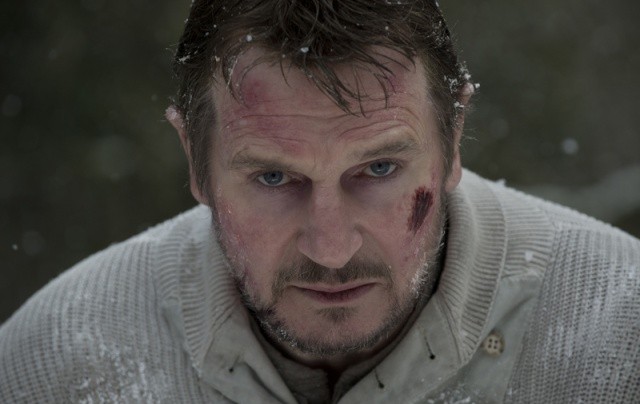Culture
Hopeless, violent shades of “Grey”

The Grey
dir. Joe Carnahan
Release Date: Jan 27, 12
- 1
- 2
- 3
- 4
- 5
- 6
- 7
- 8
- 9
- 10
“Live or die on this day.” That’s both the tagline for The Grey and a poem John Ottway (Liam Neeson) used to hear from his father, a poem that becomes his mantra throughout his brutal ordeal. During Joe Carnahan’s film, I was moved to recall Abraham Lincoln as well: “If destruction be our lot, we must ourselves be its author and finisher.” This is a powerful film, savage and spare and horrifying and profoundly moving in its way. It becomes clear that survival is intangible, with the potential hazards to continued life constantly increasing.
The Grey begins in an unnamed rigger’s town in the Arctic. Here, as Ottway mentions in his opening narration, there is no hope, just a place of last resort for those unfortunate enough to arrive there. Like a hopeless, tragic spin on the Antarctic wanderlust colony in Herzog’s Encounters at the End of the World, this is a place for convicts, escapees and lonely wanderers to end up when hope is lost. Ottway is just one among them, but he’s been forced there by circumstances well beyond himself. He’s also seemingly the only one uninterested in talking about them; men like Flannery (Joe Anderson) and Diaz (Frank Grillo) are all too happy to espouse their take on the rig’s collective existential situation. By day they work, by night they drink to excess, fighting and fornicating to keep themselves moving. These are men who speak in clipped terms, who only know each other by their last names and don’t have friends so much as fellow worn travelers.
When the plane taking them back to the relatively civilized territory of Anchorage ices over and crashes violently, only a select few survive. Their reward is a tundra where snow perpetually blows in sheets and territorial wolves don’t take too well to the few who made it. Ottway is among them, and he takes the lead, guiding his few in a direction that may vaguely signal safety and only guarantees that they won’t immediately die by the wolves or the cold. Cinematographer Masanobu Takayanagi embraces the oppressive monochrome of this sparse world to stunning effect, turning the open wilderness into a claustrophobic nightmare. Through an open field of snow and into a forest, the men trudge through, attempting to find a way to overcome the threat of the wolves, those constant, fast-moving specters of death. They’re rarely seen in detail, instead viewed as dark shapes in trees or glowing eyes in the darkness.
Those expecting the standard Liam Neeson badass-fest need not apply. There’s none of the entertaining histrionics of Taken here, but instead a violent contemplation of strength and mortality, and how the two react under duress. Neeson gives a phenomenal performance, and it’s hard not to feel the twinge of truth at its core; his dreams mainly show his wife, gone for reasons that are unclear until late in the game. That Neeson’s real-life wife Miranda Richardson died tragically last year gives The Grey another level of unbearable emotion. When Ottway stares the wolves in the face, and encourages his men to join him, there is more than bravado behind his eyes. There is fear and pain and raw power all at once.
Carnahan has no interest in clean narrative flow, though the film moves at a stunning clip. Though many of the survivors begin as stock “types,” they evolve with their ordeal into fully realized, vulnerable men who crack jokes about things they want to return home to, but mostly just want to avoid death. I mentioned Herzog earlier, who’s acknowledged in a funny early one-liner, but the naturalistic apocalypse of some of his earlier work is felt here. What’s more surprising is Carnahan’s direction, normally style above all but here stripped to its cold, bleak bones. The Grey offers no comforts, but beneath the tension and violence there is a tale of the darkest parts of memory and life. A movie with the courage to explore such places is a rare, beautiful thing.